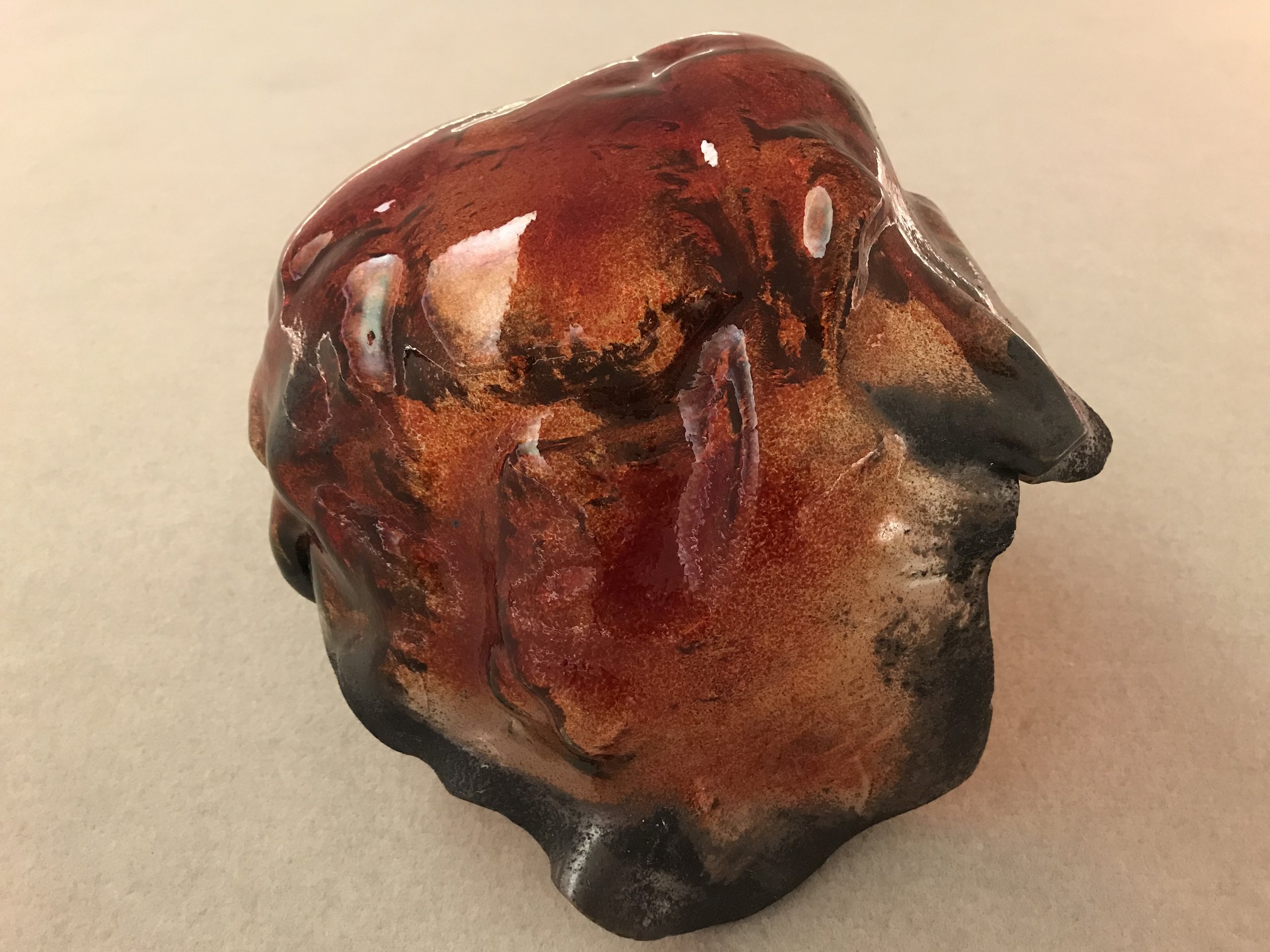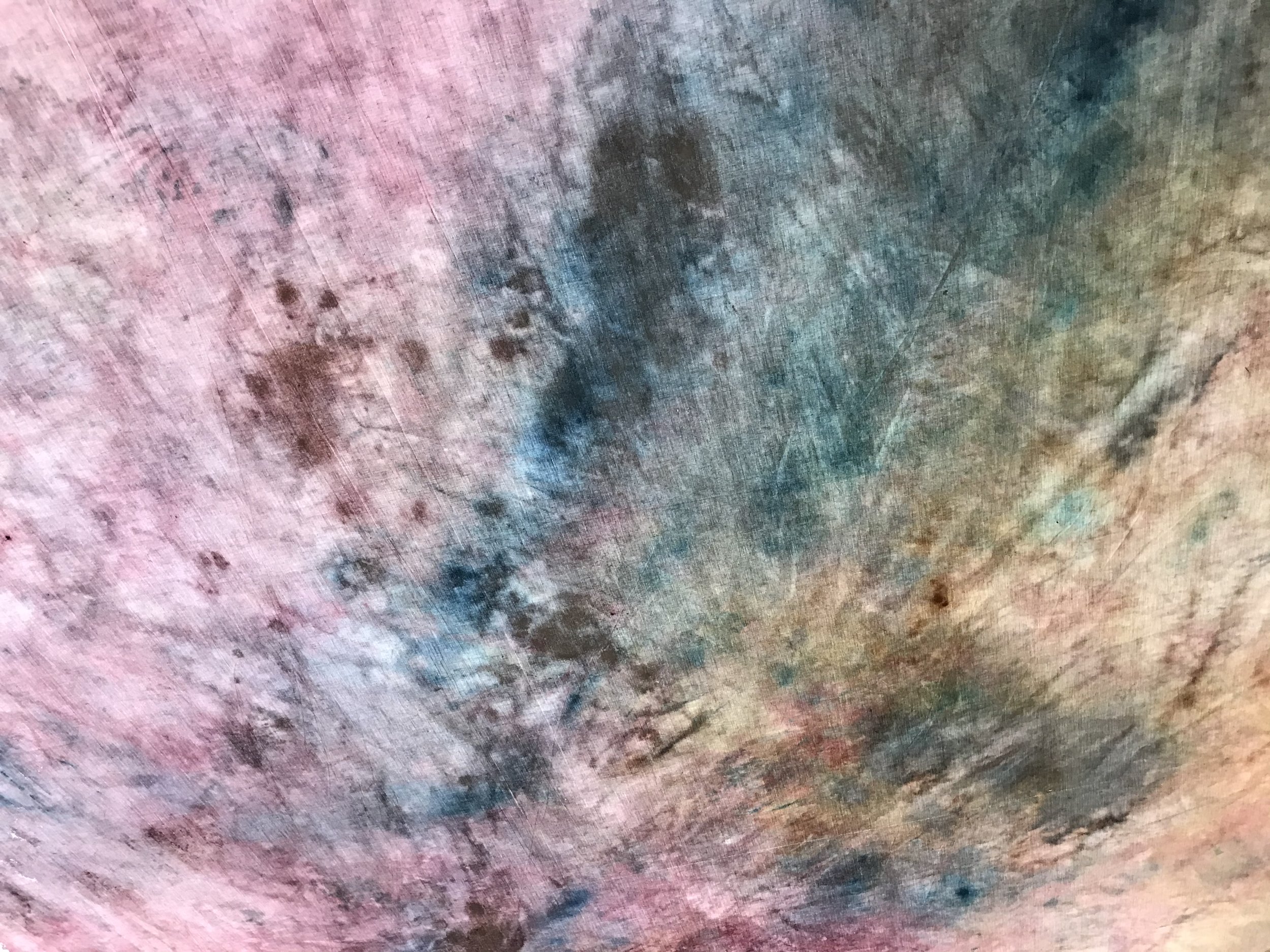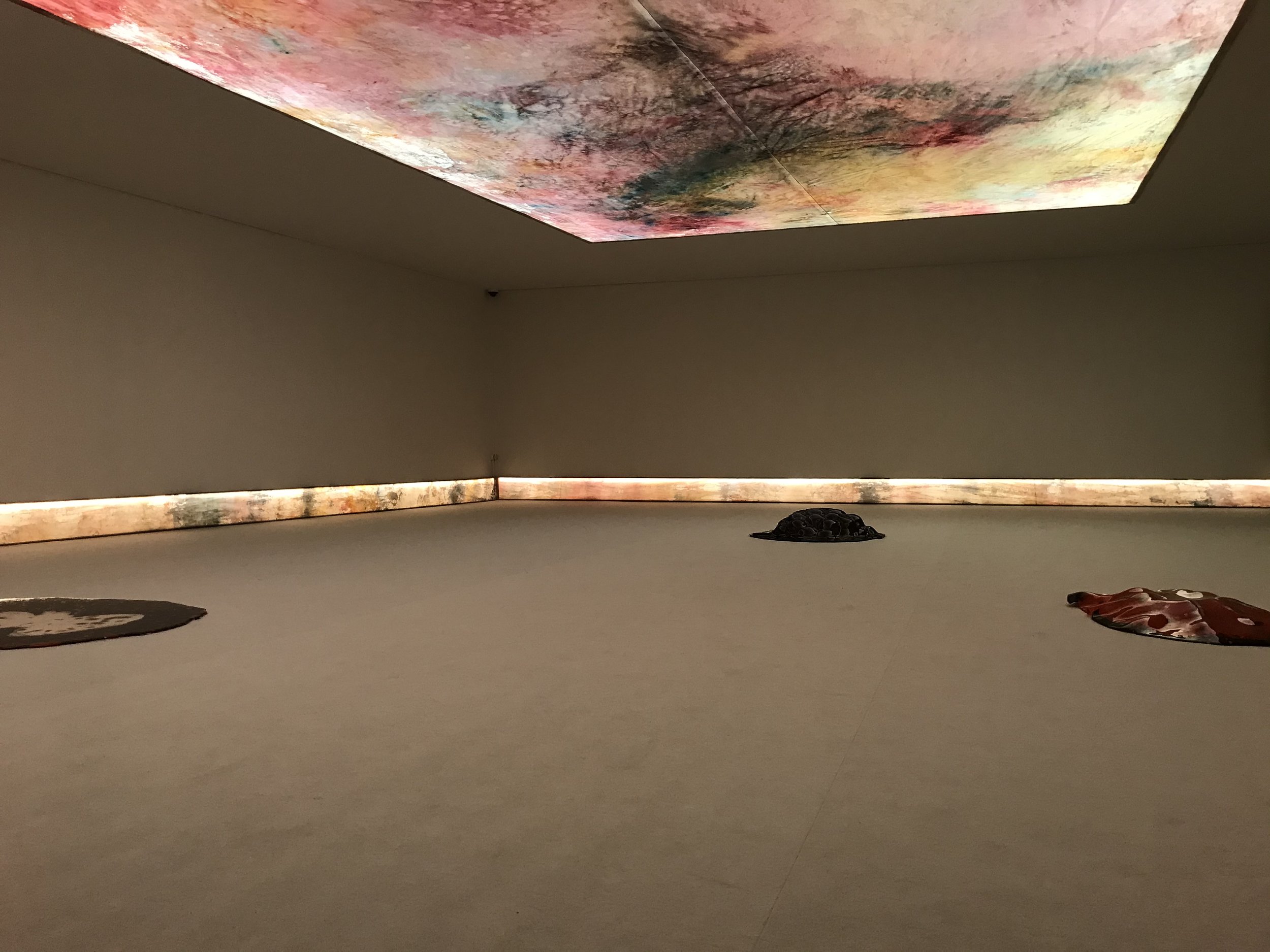
The Enchanted Submerged Cave

“The Enchanted Submerged Cave” was originally published in Portuguese on Contemporânea, about the exhibition Cnidarian polyps repaired by the eye of the observer, by Hugo Canoilas, at the Contemporary Gallery of the Serralves Museum, on display between 9 October 2020 and 9 May 2021.
Image credits: View of the exhibition Cnidarian polyps repaired by the eye of the observer by Hugo Canoilas. Photo: Susana Ventura.
Allow me to transgress the formalist language of art criticism in the present text. I confess that I have created some reluctance to curatorial discourses that use the adjective “immersive” as in the expression: “This is an immersive exhibition.” This attribute has become commonplace, that when mentioned, it seems to discard any other description, interpretation or forms of discourse. In a way, it would be enough to evoke this great figure of abstract language as a substitute not only of the object, but of the experience itself. The different uses of this adjective in very distinct areas of the aesthetic experience (despite the seduction I generally find in unpredictable contaminations) increase my distrust when it is applied to the intimate encounter between each person and an artwork. And I would like to depart exactly from this encounter, ignoring what I have learned under the wise advice of Mieke Bal, not only to account my personal experience of the exhibition Cnidarian polyps repaired by the eye of the observer, by Portuguese artist Hugo Canoilas (curated by Marta Almeida and Ricardo Nicolau for the Contemporary Gallery of Serralves), as I also find in a description by the artist a wonderful replacement of the mentioned attribute. With his work, Canoilas wishes to “summon the body and the sensitivity of people” (1) to the detriment of an understanding through the signifiers and meanings attributed and unveiled by himself and by each spectator of the displayed works. It seems that this would be the closest description of what the expression “immersive experience” intends to name, in which sensitivity is the first faculty to act and activate perception in the intimate encounter with the artwork. As a faculty of the body (or rather a singular product of the nervous system), sensitivity discards any recourse to words or verbal language, using instead its language, which we often have difficulty in translating through the first, because it makes use of awakenings, astonishments, fears and wonders, characteristic of what we call unspeakable.
I arrived in Serralves on a beautiful morning with high winter sun, a rare spectacle in the city of Oporto, especially at that time of the year. It was one of the coldest days so far, which possibly justified the city’s silence. The museum was almost empty. Apart from me, there were only a couple of workers assembling an artwork in the lobby. The Contemporary Gallery, destined for experimental exhibitions (thought, produced and created specifically for its room), was also empty. A silence ran through the space that was not strange to me despite the sigh of wonder that Canoilas’ installation immediately causes. The ethereal and transient side of colours and shapes puts us in the air, in-between the subtle movements of coloured atmospheric masses, more than in the depths of the ocean waters, notwithstanding Canoilas' inspiration on marine flora and fauna images, which, incidentally, appear and reappear frequently in the artist’s work. (2)

View of the exhibition Cnidarian polyps repaired by the eye of the observer by Hugo Canoilas. Photo: Susana Ventura.
It is at that moment that everything plays out. The sublime beauty that the paintings unveil is disconcerting as soon as we start to look attentively. The world will not collapse, but it will certainly suffer a crash in the uncontrollable chain of catastrophes (natural and human) with which it has loomed over us. I sat down on the floor to take a closer look at the glass sculptures and let myself be enveloped by the long illuminated painting that runs along the baseboard. The light is pale and calm, forcing the body to slow down. The luminescent creatures were beside me, and I could almost feel the fluid, uninterrupted surface of their bodies. I imagined myself caressing them and being transported to the seashore, to a pool of water, similar to what the artist reports about the activation process of these beings and their life, the inorganic life they contain. The artist took the sculptures to the beach, a strange environment to the artwork that nevertheless allowed to trigger its perception and, specifically, its animality. The repair, which the exhibition title evokes, is also this one: it is not enough to look at the glass sculptures from a lower perspective, close to the ground, to build a becoming-animal through the gaze. However, the position this gaze offers to the body should create, in the body itself, empathy for the animal that the human being also is. And through looking, one is giving back to the animal its identity as a living being equal to a human, repairing the empathy through affection that connects all nature manifestations in the world, regardless of their size, presence, matter, or elements of which they are constituted.
Donna J. Haraway, a reference to Canoilas, refers in her work to two meanings that we witness in the exhibition. Today, perhaps more than ever (or if we go back enough in time, we realise that somewhere, in the beginning, it would have been like this, following Eduardo Viveiros de Castro and Déborah Danowski’s ideas), it is important to embrace the present and its critical, problematic, traumatic, and devastating senses, seeking to meddle inside things, all things, those that shake our consciences, producing terrifying shocks, and those that calmly lead us to a tomorrow, that are not complete in the promise of a luminous future, but in a present to which we will be able to answer affirmatively (like Nietzsche in his eternal return): a “yes” to life, coexistence and coalescence of all corporeal and material manifestations of the earth’s surface. “Stay in the trouble,” Haraway’s motto, has this double meaning: to stay in space-time welcoming the complexity of the present and all beings and elements and to remain-together in vagueness, in exteriority, in difference. The artwork will never be an answer, nor is it a proposition. But there is something in it that is problematic enough that it should shake us and make us question this huge fracture of the present, what we are and what we are with the Other or with the Other we are.
From the beach experience, the artist took some options about the display of the glass sculptures, such as how light would fall on their surfaces and the sculptures transform themselves into beings of light. On the glass sculptures that lay down underneath the illuminated canvas that lines Álvaro Siza’s ceiling opening, the light separates itself as the coloured pigments transform into radiant droplets gently resting on the glassy shells. Light animates these in another way, certainly close to the sublime but also to the gelatinous body of jellyfish. It is important to point out that I do not find any attempt at figurative representation in this exhibition, even though Canoilas' glass sculptures seem to inherit some characteristics of the jellyfish. Their shapeless configurations, their transitory state of body-light and body-water/liquid (that, one day, glass was) highlight a degree of spontaneous vagueness, that also results from the creation process that the sculptures crystallised. It is these same characteristics that allow sculptures to escape representation and create (and create and recreate themselves) (in) a world of their own, immanent and multiple: a work in constant becoming (becoming is, precisely, opposite to representation).
Until this exhibition, the artist had never worked with glass, and this lack of knowledge necessarily induced an opening to the formless and free forces of matter in turmoil. Even with the experience and expertise of Conceição Cabral, a glass artist from Valado de Frades, there was no deliberate control over the shapes, textures and colours (the vivid colours that jellyfish display in the depths of the oceans), that in that way remain in a latent and permanent state of becoming-intensive. I dare to say that these were captured in this threshold close to the free energetic forces that pass through both planes - of matter and form - in mutual exchanges during the modelling process, as Gilbert Simondon defined it (contrary to the traditional static model). And both in the glass sculptures and in the lightbox paintings, I find this abandonment and openness of the artist to the untimely forces of chaos, colourful, pictorial chaos, as Paul Klee once referred.

View of the exhibition Cnidarian polyps repaired by the eye of the observer by Hugo Canoilas. Photo: Susana Ventura.
Painting is, perhaps, the medium most familiar to Canoilas, in which the artist could “become a prisoner in his mastery,” as the artist mentioned. However, his path reveals another story, namely the existence of moments of rupture in Art History. In these moments, limits are transgressed, and categories are dissolved, including in the path of an artist, when he/she inserts or crosses through his work witch lines or lines of deterritorialisation (as Gilles Deleuze would say). In this exhibition, we see the occupation of marginal and marginalising spaces in painting, such as the baseboard and the ceiling. Although there is a tradition of paintings/frescos on the ceiling, Canoilas, by privileging the baseboard and ceiling planes and ignoring the wall, is questioning the privileged place of painting while challenging the viewer’s place in the world (because it is also that place, the place of the pictorial tradition). Recalling Jonathan Crary, the development of most optical devices, which simultaneously enable changes in vision regimes, is almost always preceded or accompanied by changes in perception regimes, necessarily subjective (the knowledge of the world that shapes us as subjects). Canoilas’ option seeks to question, more than the place of painting in its long tradition, the place of the observer in his/her relationship with the world, particularly at the present moment (hence the always political character of his work as well).
There I remained for some time, changing my sitting position among the jellyfish. I so wanted to lie down!
"Without a doubt a new world asks us for new words, but the silence is so great and the transparency so clear that I speechless lean my face on the surface of the waters as smooth as a ground.”
- Sophia de Mello Breyner Andresen, “As Grutas,” Livro Sexto, 1962 (3)
Notes
Hugo Canoilas at “Talks with Serralves,” on February 5, 2021.
In the artist’s exhibition currently at Mumok, in Vienna, which Canoilas considers as part of a trilogy formed by Serralves’ exhibition and a third upcoming for the Gulbenkian Museum, the colours of the paintings (and these include the industrial carpet, which covers the floor of the exhibition room at Mumok, and the pieces in wool) are stronger and “full” (or, in the artist’s words, more “psychedelic”), while in Serralves’ paintings, the colours are softer and, almost, docile.
At the end of his conversation with Marta Almeida, in the context of “Talks with Serralves”, Canoilas shared the following excerpt from the text “As Grutas” [The Caves], by Portuguese writer and poet Sophia de Mello Breyner Andresen, in which I recognise the nuances of the paintings, the light made of water (and the water of light), the terror and amazement, with which the exhibition welcomes us: “An invisible thread of dazzled wonder guides me from cave to cave. Here is the sea and the light seen from within. Terror of entering beauty's secret abode, the terror of seeing what not even in dreams I had dared to see, the terror of looking face-to-face with images more interior to me than my own thought. Slip my shoulders surrounded by water and purple plants. I cross stone gorges, and the architecture of the labyrinth hovers gnawed over the green. Columns of shadow and light support sky and earth. Anemones surround the large water room where my fingers touch the pink sand at the bottom. And I open my eyes wide in the liquid and green silence where fast, fast fish flee from mum. Arches and rosettes support and design the light of morning spaces. The palaces of the king of the sea flow with light and water. This morning is like the beginning of the world, and here I come to see what has never been seen,” Sophia de Mello Breyner Andresen, “As Grutas,” Livro Sexto, 1962.